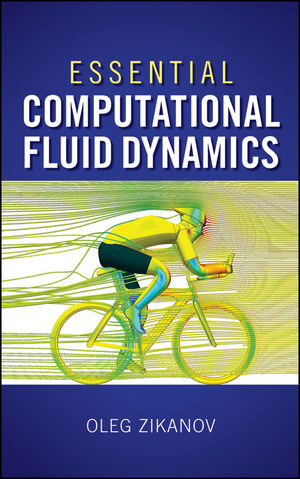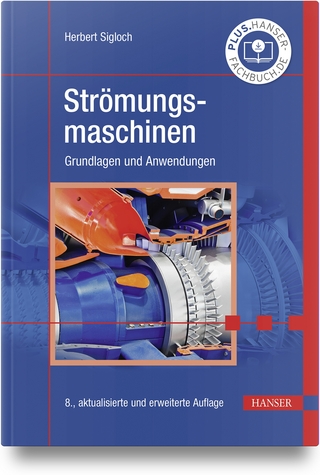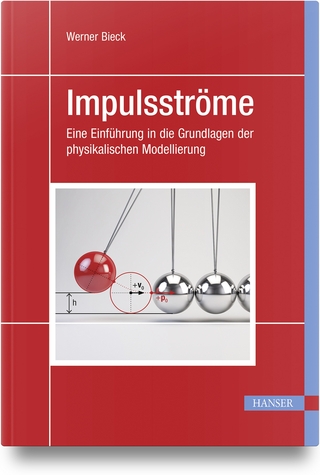
Essential Computational Fluid Dynamics
John Wiley & Sons Ltd (Verlag)
978-0-470-42329-5 (ISBN)
- Titel erscheint in neuer Auflage
- Artikel merken
This book serves as a complete and self-contained introduction to the principles of Computational Fluid Dynamic (CFD) analysis. It is deliberately short (at approximately 300 pages) and can be used as a text for the first part of the course of applied CFD followed by a software tutorial. The main objectives of this non-traditional format are: 1) To introduce and explain, using simple examples where possible, the principles and methods of CFD analysis and to demystify the 'black box of a CFD software tool, and 2) To provide a basic understanding of how CFD problems are set and which factors affect the success and failure of the analysis. Included in the text are the mathematical and physical foundations of CFD, formulation of CFD problems, basic principles of numerical approximation (grids, consistency, convergence, stability, and order of approximation, etc), methods of discretization with focus on finite difference and finite volume techniques, methods of solution of transient and steady state problems, commonly used numerical methods for heat transfer and fluid flows, plus a brief introduction into turbulence modeling.
Oleg Zikanov is an Associate Professor in the Department of Mechanical Engineering at the University of Michigan Dearborn.
PREFACE. 1 What Is CFD? 1.1. Introduction. 1.2. Brief History of CFD. 1.3. Outline of the Book. References and Suggested Reading. I Fundamentals. 2 Governing Equations of Fluid Dynamics and Heat Transfer. 2.1. Preliminary Concepts. 2.2. Mass Conservation. 2.3. Conservation of Chemical Species. 2.4. Conservation of Momentum. 2.5. Conservation of Energy. 2.6. Equation of State. 2.7. Equations in Integral Form. 2.8. Equations in Conservation Form. 2.9. Equations in Vector Form. 2.10. Boundary Conditions. References and Suggested Reading. Problems. 3 Partial Differential Equations. 3.1. Model Equations; Formulation of a PDE Problem. 3.2. Mathematical Classification of PDE of Second Order. 3.3. Numerical Discretization: Different Kinds of CFD. References and Suggested Reading. Problems. 4 Basics of Finite Difference Approximation. 4.1. Computational Grid. 4.2. Finite Differences and Interpolation. 4.3. Approximation of Partial Differential Equations. 4.4. Development of Finite Difference Schemes. References and Suggested Reading. Problems. 5 Finite Volume Method. 5.1. Introduction and Integral Formulation. 5.2. Approximation of Integrals. 5.3. Methods of Interpolation. 5.4. Boundary Conditions. References and Suggested Reading. Problems. 6 Stability of Transient Solutions. 6.1. Introduction and Definition of Stability. 6.2. Stability Analysis. 6.3. Implicit versus Explicit Schemes-Stability and Efficiency Considerations. References and Suggested Reading. Problems. 7 Application to Model Equations. 7.1. Linear Convection Equation. 7.2. One-Dimensional Heat Equation. 7.3. Burgers and Generic Transport Equations. 7.4. Method of Lines Approach. 7.5. Implicit Schemes: Solution of Tridiagonal Systems by Thomas Algorithm. References and Suggested Reading. Problems. II Methods. 8 Steady-State Problems. 8.1. Problems Reducible to Matrix Equations. 8.2. Direct Methods. 8.3. Iterative Methods. 8.4. Systems of Nonlinear Equations. References and Suggested Reading. Problems. 9 Unsteady Problems of Fluid Flows and Heat Transfer. 9.1. Introduction. 9.2. Compressible Flows. 9.3. Unsteady Conduction Heat Transfer. References and Suggested Reading. Problems. 10 Incompressible Flows. 10.1. General Considerations. 10.2. Discretization Approach. 10.3. Projection Method for Unsteady Flows. 10.4. Projection Methods for Steady-State Flows. 10.5. Other Methods. References and Suggested Reading. Problems. III Art of CFD. 11 Turbulence. 11.1. Introduction. 11.2. Direct Numerical Simulation (DNS). 11.3. Reynolds-Averaged Navier-Stokes (RANS) Models. 11.4. Large-Eddy Simulation (LES). References and Suggested Reading. Problems. 12 Computational Grids. 12.1. Introduction: Need for Irregular and Unstructured Grids. 12.2. Irregular Structured Grids. 12.3. Unstructured Grids. References and Suggested Reading. Problems. 13 Conducting CFD Analysis. 13.1. Overview: Setting and Solving a CFD Problem. 13.2. Errors and Uncertainty. 13.3. Adaptive Grids. References and Suggested Reading. INDEX.
| Verlagsort | Chichester |
|---|---|
| Sprache | englisch |
| Maße | 169 x 239 mm |
| Gewicht | 666 g |
| Themenwelt | Naturwissenschaften ► Physik / Astronomie ► Strömungsmechanik |
| Technik ► Maschinenbau | |
| ISBN-10 | 0-470-42329-3 / 0470423293 |
| ISBN-13 | 978-0-470-42329-5 / 9780470423295 |
| Zustand | Neuware |
| Informationen gemäß Produktsicherheitsverordnung (GPSR) | |
| Haben Sie eine Frage zum Produkt? |
aus dem Bereich



